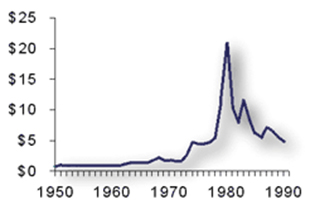Yearly Average Prices of Silver Since 1950

In order to understand the unique place silver occupies in today ís market, we must look at the silver market trends that began in the 1950s.

In order to understand the unique place silver occupies in today ís market, we must look at the silver market trends that began in the 1950s.
Recent Comments